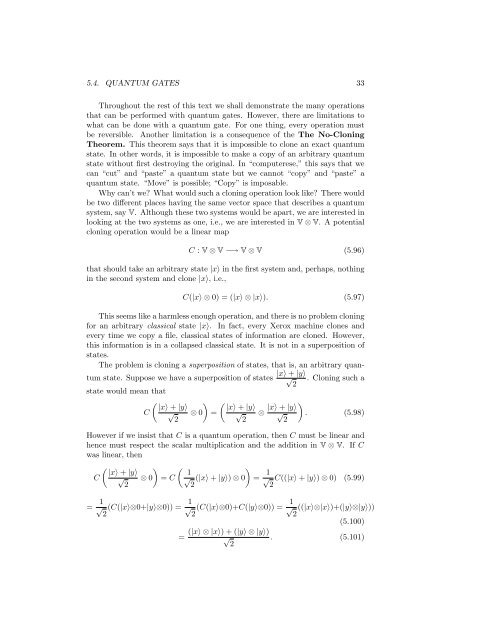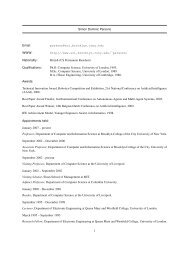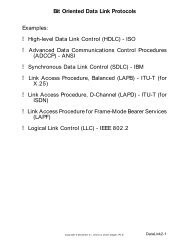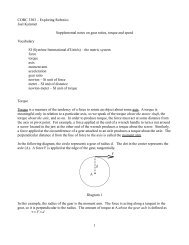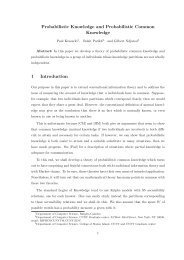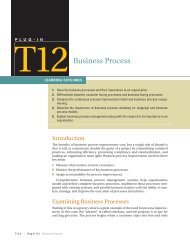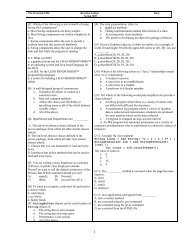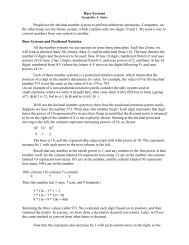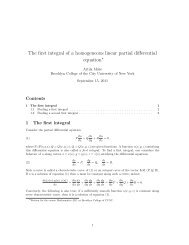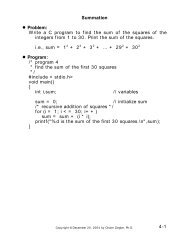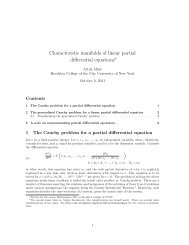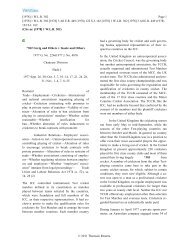Chapter 5: Architecture - Computer and Information Science - CUNY
Chapter 5: Architecture - Computer and Information Science - CUNY
Chapter 5: Architecture - Computer and Information Science - CUNY
Create successful ePaper yourself
Turn your PDF publications into a flip-book with our unique Google optimized e-Paper software.
5.4. QUANTUM GATES 33<br />
Throughout the rest of this text we shall demonstrate the many operations<br />
that can be performed with quantum gates. However, there are limitations to<br />
what can be done with a quantum gate. For one thing, every operation must<br />
be reversible. Another limitation is a consequence of the The No-Cloning<br />
Theorem. This theorem says that it is impossible to clone an exact quantum<br />
state. In other words, it is impossible to make a copy of an arbitrary quantum<br />
state without first destroying the original. In “computerese,” this says that we<br />
can “cut” <strong>and</strong> “paste” a quantum state but we cannot “copy” <strong>and</strong> “paste” a<br />
quantum state. “Move” is possible; “Copy” is imposable.<br />
Why can’t we? What would such a cloning operation look like? There would<br />
be two different places having the same vector space that describes a quantum<br />
system, say V. Although these two systems would be apart, we are interested in<br />
looking at the two systems as one, i.e., we are interested in V ⊗ V. A potential<br />
cloning operation would be a linear map<br />
C : V ⊗ V −→ V ⊗ V (5.96)<br />
that should take an arbitrary state |x〉 in the first system <strong>and</strong>, perhaps, nothing<br />
in the second system <strong>and</strong> clone |x〉, i.e.,<br />
C(|x〉 ⊗ 0) = (|x〉 ⊗ |x〉). (5.97)<br />
This seems like a harmless enough operation, <strong>and</strong> there is no problem cloning<br />
for an arbitrary classical state |x〉. In fact, every Xerox machine clones <strong>and</strong><br />
every time we copy a file, classical states of information are cloned. However,<br />
this information is in a collapsed classical state. It is not in a superposition of<br />
states.<br />
The problem is cloning a superposition of states, that is, an arbitrary quantum<br />
state. Suppose we have a superposition of states √ . Cloning such a<br />
2<br />
|x〉 + |y〉<br />
state would mean that<br />
( ) ( )<br />
|x〉 + |y〉 |x〉 + |y〉 |x〉 + |y〉<br />
C √ ⊗ 0 = √ ⊗ √ . (5.98)<br />
2 2 2<br />
However if we insist that C is a quantum operation, then C must be linear <strong>and</strong><br />
hence must respect the scalar multiplication <strong>and</strong> the addition in V ⊗ V. If C<br />
was linear, then<br />
( ) ( )<br />
|x〉 + |y〉<br />
1<br />
C √ ⊗ 0 = C √2 (|x〉 + |y〉) ⊗ 0 = √ 1 C((|x〉 + |y〉) ⊗ 0) (5.99)<br />
2 2<br />
= 1 √<br />
2<br />
(C(|x〉⊗0+|y〉⊗0)) = 1 √<br />
2<br />
(C(|x〉⊗0)+C(|y〉⊗0)) = 1 √<br />
2<br />
((|x〉⊗|x〉)+(|y〉⊗|y〉))<br />
(5.100)<br />
(|x〉 ⊗ |x〉) + (|y〉 ⊗ |y〉)<br />
= √ . (5.101)<br />
2


